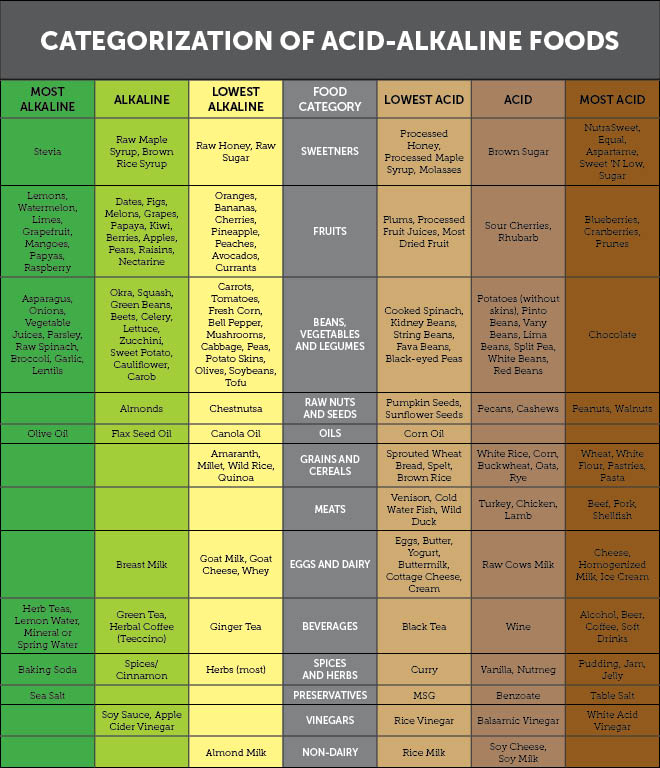Living moderately means leading a balanced lifestyle. The principles of balance and moderation are evident throughout creation. There is the positive and negative polarity in electricity. There is male and female. There is acid and alkaline.
Diet is one of the means by which God teaches us moderation and balance. You need some acid; you need more alkaline—if you eat too much of one or the other long enough, you won’t be healthy.
Now, getting back to the 16 elements of which Herbert W. Armstrong said the human body is basically composed: All of them come from food that grows out of the Earth’s soil, which is comprised of more than 100 elements.
How did you grow from a tiny ovum to a full-size adult? Through food from the ground. How are those elements maintained and replenished in our bodies as adults? Again, through food.
Mr. Armstrong wrote in the Plain Truth, December 1967: “So it is literally true that you are what you eat—and ‘dust thou art.’ Since you are merely food converted into a human body and mind, is it not plain that whatever food you put into your mouth has a very great deal to do with what you are—and with your health, or lack of it?”
We are what we eat—literally.
All the health laws are important, but since 85 to 95 percent of sickness and disease is due to faulty diet (as Mr. Armstrong learned in the ’30s), then it goes without saying that learning about these 16 elements, and how to keep a proper supply of them in our bodies, is of supreme importance when it comes to good health. This is some of the most critical and necessary knowledge God restored to His Church to lead us to good health.
Mr. Armstrong went on in his article to explain that of the 16 elements discussed, 12 are alkaline-reacting elements. These include iron, calcium, magnesium and potassium. “These supply the nourishment,” he wrote, “replace deteriorating cells, build bone, flesh, tissue, skin, hair.”
Four of the 16 elements produce carbohydrates, lipids and proteins—the acid-reacting elements that supply energy. These are carbon, hydrogen, oxygen and nitrogen.
So the 16 primary elements in our bodies come in two forms: alkaline and acid.
Now since 12 of the body’s elements are alkaline -forming and four are acid -forming, and since we replenish our bodily cells through food, what do you think a balanced meal should look like, proportionally? Twelve to 4—or 3 to 1! Seventy-five percent alkaline and 25 percent acid.
pH Balancing
Now let’s delve further into this subject and understand what is meant by alkaline and acid, and how that ties in with pH and pH balancing. Mr. Armstrong discussed this years ago without going into the details we will briefly cover here.
Webster’s definition for pH is “a measure of acidity and alkalinity of a solution that is a number on a scale on which a value of 7 represents neutrality and lower numbers indicate increasing acidity and higher numbers increasing alkalinity.”
It’s a scale of measurement that goes from 1 to 14—with 1 being the most acid, 7 neutral, and 14 the most alkaline.
pH is simply a measure of how acid or alkaline something is.
The lower the pH factor, the more acidic something is. The higher the pH factor, the more alkaline it is.
You could think of 7 as the center point, or fulcrum, on a teeter-totter (seesaw). If your body were at 7, then your internal chemistry would be perfectly balanced between acid and alkaline states.
Your pH balance is where your body currently lies on that scale.
Between 7 and 8 is the pH level your body constantly works to maintain. This is critical. Your internal body chemistry operates best when you sustain a pH balance in this range—one that is slightly alkaline.
And keep in mind that we are speaking of the level in body cells that are the building blocks of the human body, not the pH levels you can test in your urine or saliva, which are always fluctuating, sometimes dramatically.
Suffice it to say, when the cells of your body are balanced in a slightly alkaline state, you will experience robust health. As the body’s pH level drops more and more below 7.0, disease thrives. The more acidic the cells become, the sicker we are and feel. The cells begin to die when their pH gets to about 3.5.
And again, what determines whether the body is in an alkaline state?
Well, as Mr. Armstrong said, we are what we eat. We are merely food converted into human body and mind. And so, having a body that is properly alkaline depends primarily on whether or not we are eating enough alkalizing foods. To repeat, the elements in food are either acid- or alkaline-reacting.
Now, what do I mean when I say alkaline-reacting? The “reaction” is essentially the residue left behind as the foods are metabolized or digested (or burned) in the body. After the food is “burned,” so to speak, it leaves behind an ash substance—much like the burning of firewood leaves behind ash in the fireplace. This food ash can be neutral, acid or alkaline, depending on the elemental or mineral composition of the food to begin with.
If the foods contain a high content of alkaline, they will leave those elements behind as ash to alkalize the body. Or if the foods are acid, they will leave acid-ash and it will acidify the body.
Understanding the Chart
Let’s quickly look at what it will take for you to achieve that “slightly alkaline” state.
Remember, to achieve balance and moderation in your diet, you need to eat portions at about a 3-alkaline to 1-acid ratio.
In the December 1967 Plain Truth, Mr. Armstrong suggested either a 2-to-1 or 3-to-1 ratio. Even a 2-to-1 ratio would probably be a significant improvement for most of our readers. But judging by the other sources I read in preparation for this article, I think the ideal to strive for would be 3 to 1, if at all possible. And again, I think the fact that we are basically composed of 12 alkaline elements and four acid would indicate that 3 to 1 is the ideal.
Now that will be hard to do—especially with all the chemicals, pesticides and extra acid added on top of the modern diet. In today’s unhealthy society, if you think you are achieving a 3-to-1 ratio, you probably are closer to 2-to-1.
There are several things to notice on the accompanying chart below.
Almost always, fruits and vegetables line up on the alkaline side, while dairy products, grains, legumes, eggs and meats fall on the acid side.
The most alkaline foods of all are fruits—especially lemons, limes, figs, dates and grapes. And the most acidic include chocolate, red meats, cranberries, blueberries, prunes, peanuts and walnuts.
That brings us to a very important point: The purpose of this chart is not to list what foods are good for you as opposed to bad for you. This is not a good food-bad food chart! God obviously created meats and grains for us to eat. Christ ate them while He was human. It simply shows the relative amount of acid ash or alkaline ash these foods produce when digested so that you can then strive for that 3-to-1 balance when preparing meals.
Remember God’s basic law of physical health. It’s not that we should be vegetarians or avoid red meat altogether. It’s that we enjoy those foods God has created for us to eat—but in proper balance. And “proper balance” is not the classic meat-and-potatoes diet that so many Americans enjoy. Neither is it what some others think: If I eat some salad, some meat and potatoes, some junk food, some greasy food, some fast food, some sugary food and an apple once in a while, then I must be balanced.
Though complex carbohydrates are acidic foods, we should all know that these can be good for us. They supply a wide variety of B vitamins—that help stabilize our nerves, help with stress, give energy and so on. Also, cranberries and prunes are well known for cleansing the kidneys and colon. So, just because foods are acidic doesn’t mean they are bad and need to be avoided.
The 3-to-1 balance is the key.
Another thing we should note when examining this chart is that not all foods are equal on either side of the pH scale’s neutral line.
By that I mean that if you ate 4 ounces of an alkaline-reacting food and 4 ounces of an acid-reacting food, they wouldn’t necessarily cancel each other out and achieve a neutral state of 7 on the pH scale.
Why? Well, for one, we need a 3-to-1 balance. Besides that, different foods have varying amounts of different elements. So where one alkaline food might be rated an 8 on the pH scale, another food might be rated an 11. The first is +1 alkaline, while the second is +4.
This is why one 4-ounce carrot won’t cancel out one 4-ounce piece of Betty Crocker’s cake. And of course, that’s aside from all the toxic acidic preservatives that are often in such substances as the cake.
This piece of understanding is key to your ability to plan and prepare properly balanced meals throughout the day for yourself or your families. It’s not just what we eat, it’s how much of what we eat that matters when considering our overall pH intake.
Also, cooking can alter the elemental content of foods—for example, raw spinach is alkalizing while cooked spinach is acidifying.
One last thing: We put this chart together ourselves by combining it from a few different sources. We can’t say it’s a definitive authority on the ratings. Different charts sometimes rate foods differently. But in studying all of them, we can get a pretty good general understanding of the relative degree of acid ash or alkaline ash that a particular food produces. Do the best you can, and try to keep it simple.
That said, however, there is one consistency on all the charts: When you compare the foods God created with the foods man has created, you will always be better off eating foods as God created them to be eaten.
 Credit: Philadelphia Church of God
Credit: Philadelphia Church of God
